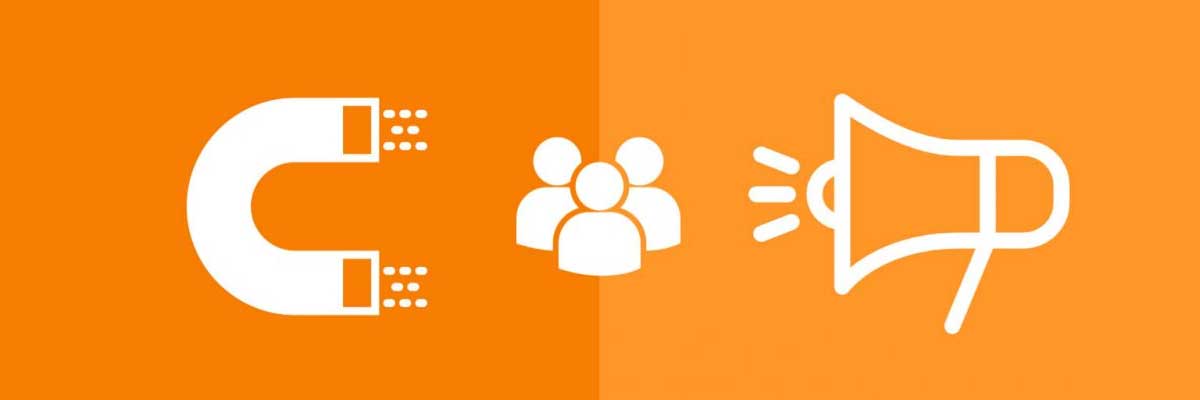

When it comes to lead generation there comes inbound and outbound marketing to our mind. Each of them has it’s own value and can drive sales. A proper marketing strategy shall consider both of them. However, depending on the target audience, your budget, the campaign strategy, etc. one approach may be better suited than the other. So, how can you decide which one is the better choice for your product or brand, inbound vs outbound lead generation?
Lead generation is a vital step for every business. Picking the right strategies to drive leads can help yield better results. The below infographic from Spiralytics provides a visual comparison of inbound vs outbound lead generation strategy and outlines the pros and cons of each.
First the Definition
Inbound Marketing – means presenting your brand in front of an audience that is already looking for a solution, product, or service which you offer by using digital channels. This method is permission-based, the audience has acknowledged receiving information.
Outbound Marketing – reaches out to the target audience which is maybe not aware of your offering, they might not be yet identified as prospects and did not indicate intent or awareness. We see it as an interruption-based communication method.
Fast Facts
Inbound Marketing – Invesp found the average cost per lead drops 80% five months of consistent inbound marketing. In 2017, 76% of all marketers in North America used inbound marketing as their primary strategy, said Weidert Group, an inbound marketing specialist.
Outbound Marketing – On Hubspot we can read, mobile advertising spending reached $ 190 billion globally in 2019.
68% of marketers cited paid advertisement as an “extremely important” part of their overall marketing strategy.
Medium & Techniques
Inbound Marketing – is focusing on using online channels with techniques like SEO, Social Media Marketing, Blogging, Gated Content, and Ungated Content. Online events are also a good practice that can convert.
Outbound Marketing – is more focusing on traditional media like Radio, Printing Press, or TV. Also, event sponsoring or in-person events. Using direct mailing, cold colds and door-to-door pitch is building your pipeline and generates leads.
Skills
Both marketing types require maybe different skill sets or focus on certain skills. While in inbound marketing the creative and online knowledge is more essential you can see in outbound marketing more the communication and traditional marketing skills help.
It is clear that inbound marketing is not so cost-intensive as outbound marketing.
Pros and Cons
On the pros side of inbound marketing, we can see the approach is lasting longer, establishes brand expertise quite well, and leads into a good conversation. But it is time-consuming, requires more expert knowledge and it is more difficult to stand out from the competition.
Looking into the pros of outbound marketing we see the reach to a large target group is given, we have more control on the target leads and strategy and get leads ahead of competitors. But it is by nature interruptive and is limited to one-way communication. We also see that leads might not be in the position to make a decision.
You can see that each of the methods is having its valid points. We can summarize that inbound marketing enables you to be cozier with your potential new client and real sales conversation can happen. Outbound marketing helps you to put your brand into the spotlight and spread the name or increase recognition. Make your choice based on your defined target.


![Harnessing Linkedin’s Professional Network For Growth [Infographic] Linkedin’s Professional Network](https://www.skillzme.com/wp-content/uploads/2025/02/hero-image-Linkedins-Professional-Network-200x200.jpg)
![90% of Americans Think iPhone 16 Cost Too Much [Infographic] 90% of Americans Think iPhones 16 Cost Too Much](https://www.skillzme.com/wp-content/uploads/2025/02/hero-image-iphone-16-200x200.jpg)
![The Rise of Data Storytelling [Infographic] The Rise of Data Storytelling](https://www.skillzme.com/wp-content/uploads/2025/02/hero-image-rise-of-data-storytelling-200x200.jpg)


Such a great and informative article. Thanks for sharing
Thank you Maha, Happy that you found it valuable, cheers Dieter